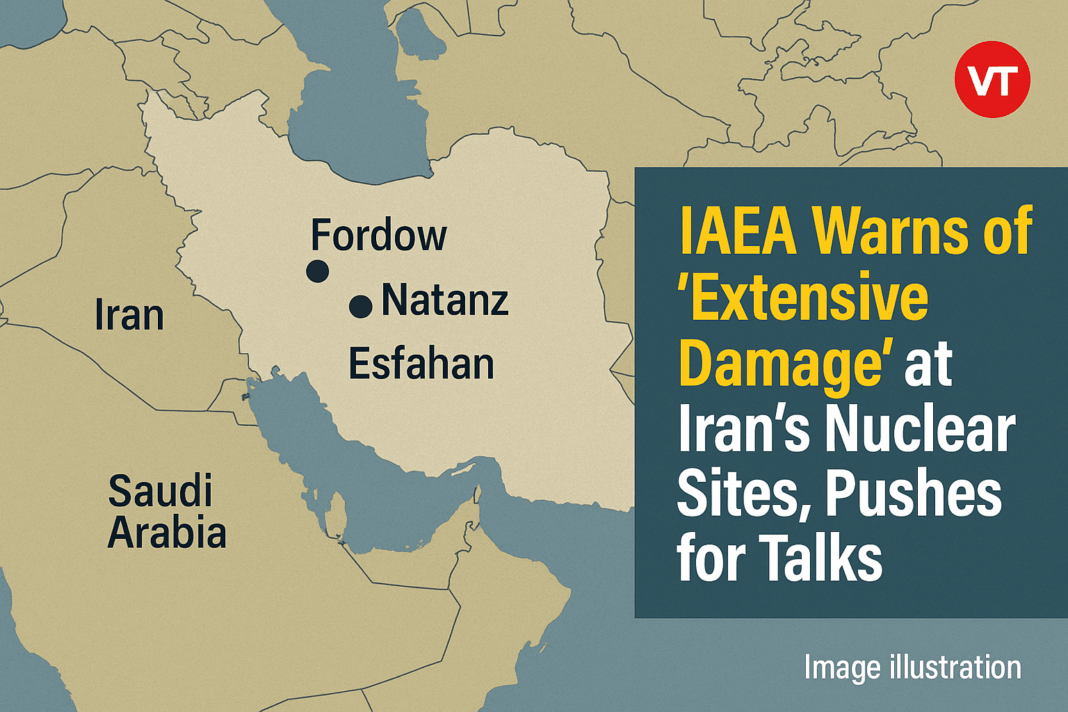The International Atomic Energy Agency (IAEA), in its 5th update released Sunday, confirmed that three of Iran’s nuclear facilities — Fordow, Natanz, and Esfahan — sustained direct hits during overnight U.S. airstrikes, following multiple Israeli attacks in recent days.
Why it matters:
The IAEA’s confirmation of major strikes on Iran’s nuclear infrastructure intensifies concerns about a deepening regional conflict and the loss of international nuclear oversight.
State of play:
- The IAEA confirms that all three major nuclear facilities in Iran — Fordow, Natanz, and Esfahan — were directly hit in recent U.S. and Israeli airstrikes.
- Extensive additional damage was identified at the Esfahan site, including entrances to underground tunnels, raising concerns about the impact on critical infrastructure.
- While Fordow was struck, the extent of internal damage is unclear due to its underground location; assessments are ongoing.
- Iran’s nuclear regulator informed the IAEA that there has been no increase in off-site radiation levels despite the attacks.
- The IAEA emphasized the urgent need for diplomacy to resume verification activities, including oversight of Iran’s stockpile of over 400 kg of highly enriched uranium.
Driving the news:
Grossi confirmed that the IAEA had previously verified structural damage to buildings at Esfahan, some of which likely contained nuclear material. The agency is now analyzing the latest strikes, which reportedly hit new targets within the complex.
“The latest attacks early this morning damaged other buildings in Esfahan. In addition, we have established that entrances to underground tunnels at the site were impacted,” Grossi stated in the IAEA press release.
Between the lines:
The IAEA stressed that no rise in off-site radiation levels has been detected, according to Iran’s regulatory authorities. However, the inability to access sites due to ongoing hostilities means that verification of nuclear material remains suspended.
What they’re saying:
“It is clear that Fordow was also directly impacted, but the degree of damage inside the uranium enrichment halls can’t be determined with certainty.” — Rafael Grossi, IAEA Director General
“We need to try to go back to the negotiating table as soon as possible. We have to allow the IAEA inspectors to return.” — Rafael Grossi
Flashback:
Since June 13, Israel has launched sustained strikes on Iran’s nuclear sites, reportedly killing over 430 people and damaging major facilities. U.S. involvement escalated the attacks on June 21 with a coordinated strike involving over 125 aircraft and cruise missiles.
Zoom out:
The IAEA has not been able to verify Iran’s current stockpile of enriched uranium since hostilities began. Grossi warned that over 400 kilograms of highly enriched uranium remain unmonitored, and urged a return to diplomacy for global nuclear security.
What’s next:
The IAEA is calling for an immediate diplomatic initiative to end hostilities and restore inspections. Talks with both the United States and Iran are ongoing, but with military escalation continuing, the path to resolution remains uncertain.

